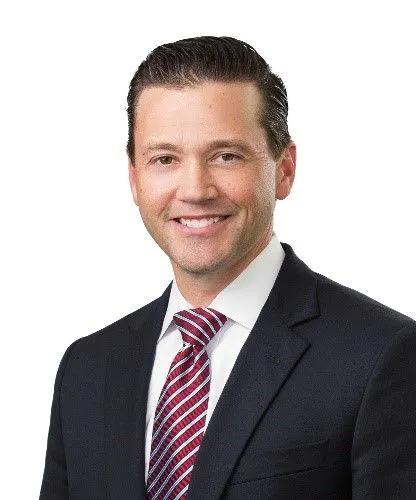Government using generative AI, analytics in search for fraud
Here’s what you need to know and do considering the DOJ’s and HHS’s drastically expanded use of digital tools to investigate and prosecute those who work in the field of healthcare, including innocent practices and providers.
Dan Martin, JD

The federal government has long used digital solutions and data mining in connection with searching for instances of health care fraud. But recently the Department of Justice (DOJ) and the Department of Health and Human Services (HHS) has modified and drastically increased its use of those tactics by adding scores of prosecutors and FBI agents who are focused on employing new technological advances in Generative Artificial Intelligence (AI) and Machine Learning to ferret out “fraud, waste, and abuse” in health care.
Even though all should agree that tackling actual fraud, waste, and abuse is important, the question arises whether this expanded and innovative data-analytics approach is unwittingly identifying some innocent practices and providers as fraudsters.
The answer is undeniably yes.
While the government will hopefully fine-tune its practice of new data-analytics tools to reduce the number of parties wrongfully targeted, in the meantime those working in the health care field should proactively prepare for being unfairly placed in the government’s crosshairs.
The federal government ramped up data mining in the wake of the COVID-19 Pandemic
The Health Care Fraud Unit of the DOJ’s Fraud Section describes itself as “a leader in using advanced data analytics and algorithmic methods to identify newly emerging health care fraud schemes and to target the most egregious fraudsters.” The government intensified this focus following its injection of approximately $5 trillion in COVID-19 pandemic stimulus money into the national economy — including $482 billion directed toward the health care system. With the encouragement of the Biden administration, the DOJ and other agency officials, the federal government rapidly expanded their investigation and enforcement activities and cast a very wide, data-based net for potential wrongdoers.
But not all atypical or unusual conduct is fraudulent
Data analytics is a good tool to suggest the need for further investigation, but it should not be used to conclusively determine misconduct.
The DOJ and HHS boast a yield of $4 or greater return on investment for every $1 spent on health care fraud detection and enforcement – and they point specifically to their reliance on data analytics as a key driver of this return.
The government’s resultant rush to use its new tools in such a sweeping manner has, unfortunately, resulted in many innocent physicians, clinics, hospitals, and health systems being accused of wrongdoing for simply being different from their peers. The fact of the matter is that being a statistical outlier or anomaly should only be treated as a basis for further inquiry, not as proof of fraud.
The DOJ has used data-mining, for example, to target practices and providers whose frequency of certain treatments and procedures exceed those of the majority of their peers (e.g., number and strength of opioid prescriptions, incidence of high-reimbursement injections, or frequent ordering of high-complexity labs such as quantitative urine drug testing, genetic testing, or molecular/PCR COVID-19 testing). But perfectly legitimate reasons could exist for being an outlier (e.g., the referral base includes many individuals already on high dosages of opioids, the practitioner has developed a reputation for success with certain injections, or the particular patient population is at a higher-than-average risk of drug abuse and diversion).
Jacob Foster, Principal Assistant Chief of the DOJ’s Health Care Fraud Unit, seemingly understands that important point in commenting, “[…] data is not the truth. While it can point us in the right direction, we have to go out and investigate.”
Yet regrettably the government recently has often not heeded Foster’s advice when employing its new data-analytics tools. Many health care providers and members of the health care defense bar can attest to situations where data analytics caused innocent actors to bear the enormous financial and reputational costs of defending federal enforcement actions merely because their numbers are different or higher than those of their peers. Indeed, this author has represented several health care clients who were accused of being fraudsters based on statistical analyses but who then had their names cleared after providing full context to the government.
What to do considering this enforcement environment
Even though this environment can be alarming, practitioners in the health care field may reduce the likelihood of being wrongfully targeted by law enforcement while also increasing the chances of successfully defending such enforcement activity by proactively taking several steps, including:
Educate yourself about your peers’ behaviors so you’re aware when deviating from them.
When you deviate from your peers, document the legitimate reasons for that deviation along with patient outcomes and benefits.
Refer unique patients to specialists when possible.
Have a trusted white collar/compliance attorney on speed dial (when you receive a ZPIC audit, Civil Investigative Demand, Whistleblower Complaint, Search Warrant, or any other item signifying an investigation it’s not the time to rely on a medical malpractice attorney or litigation generalist nor the time to start trying to find an appropriate counsel).
Routinely self-audit your claims (the government doesn’t regard the delegation of billing responsibilities to staff as a persuasive defense for improper billing).
Frequently communicate with Medicare, Medicaid, and insurers regarding billing questions and denials, and document all understandings and agreements reached (e.g., recommendations about how you should bill for certain services).
Dan Martin, JD, is a partner in Jones Walker’s Litigation Practice Group. He represents clients in in the areas of commercial litigation, corporate compliance and white collar criminal matters, internal and governmental investigations, health care fraud defense, False Claims Act defense, and employment litigation.